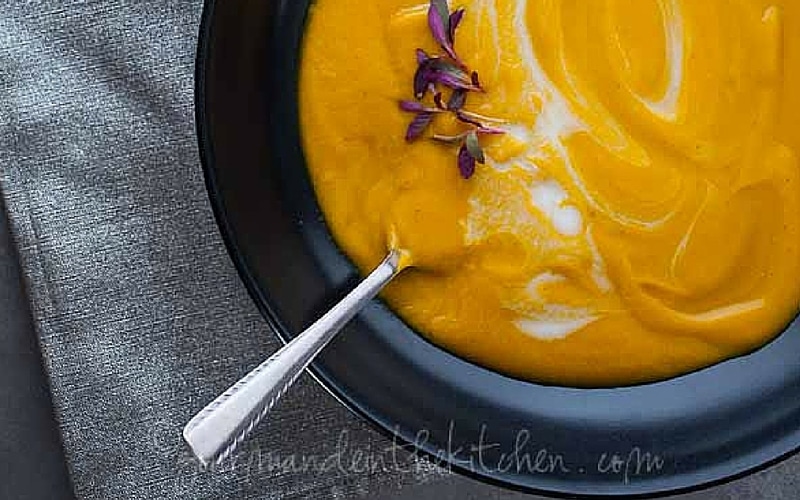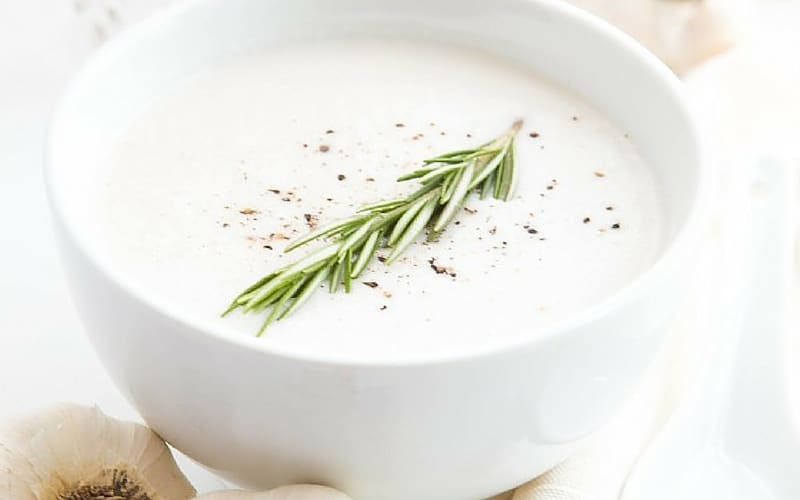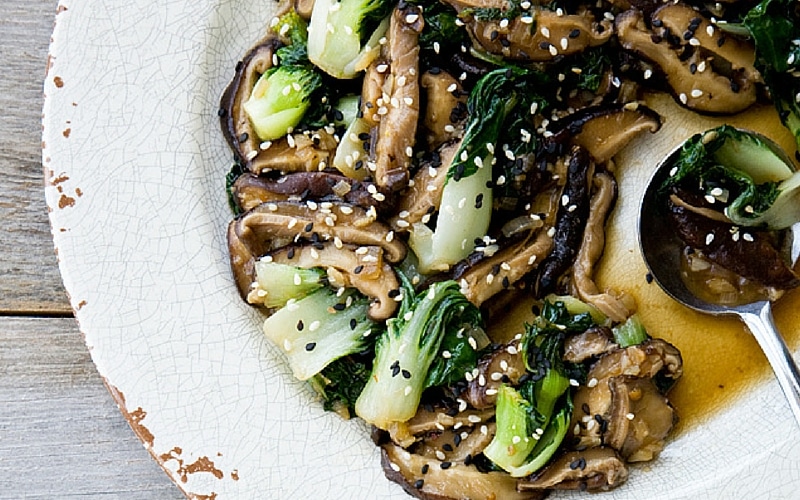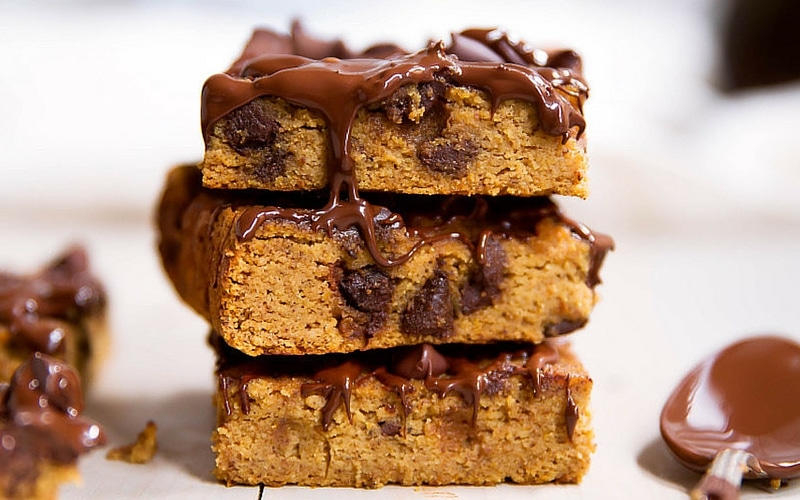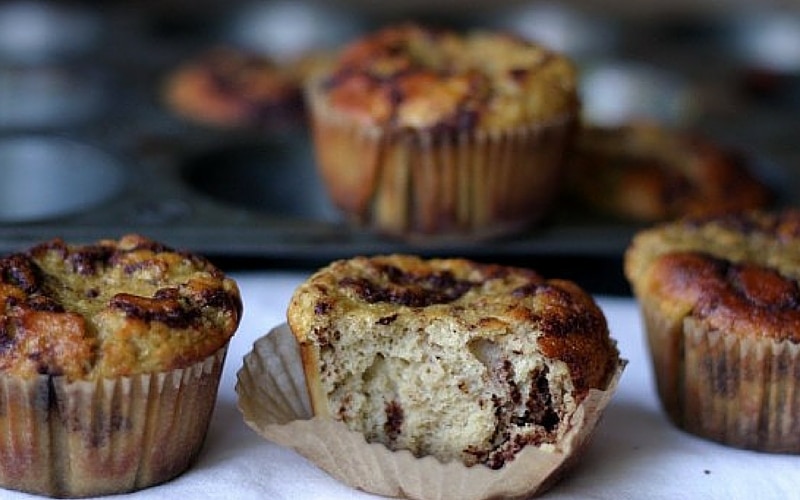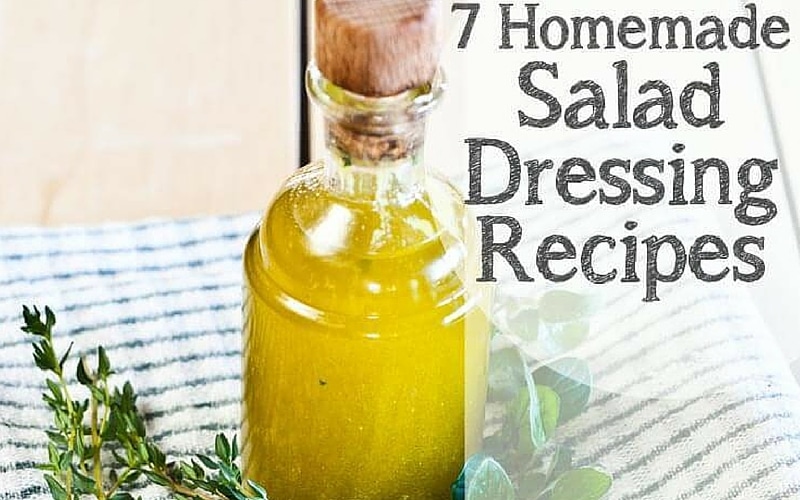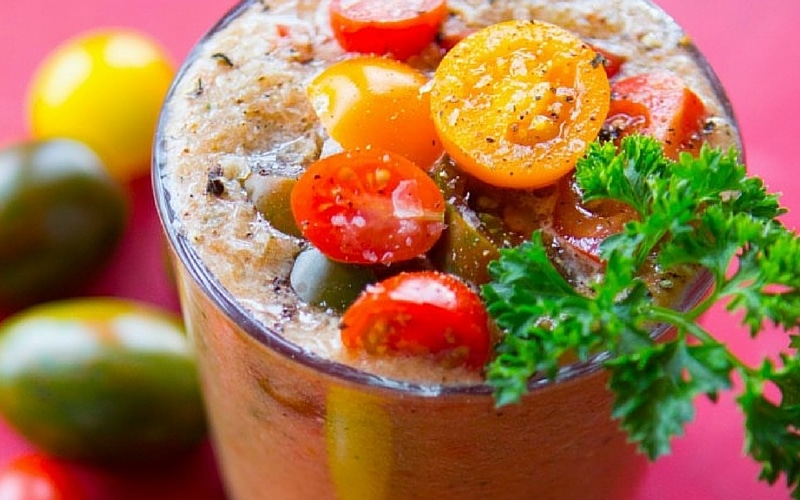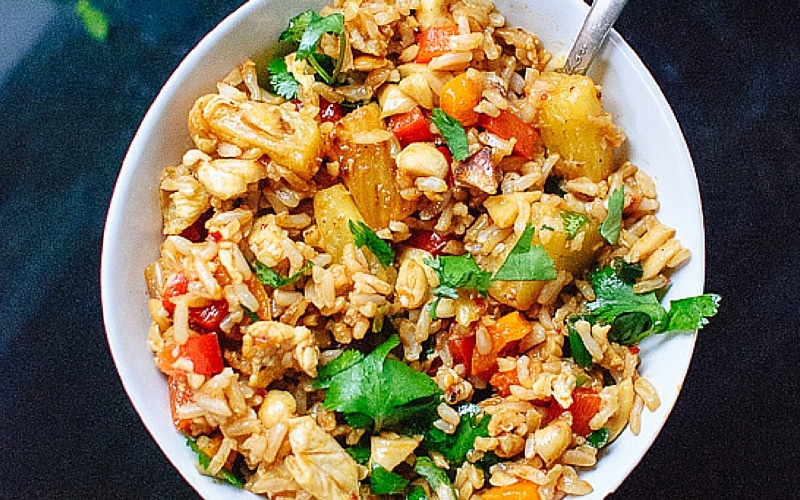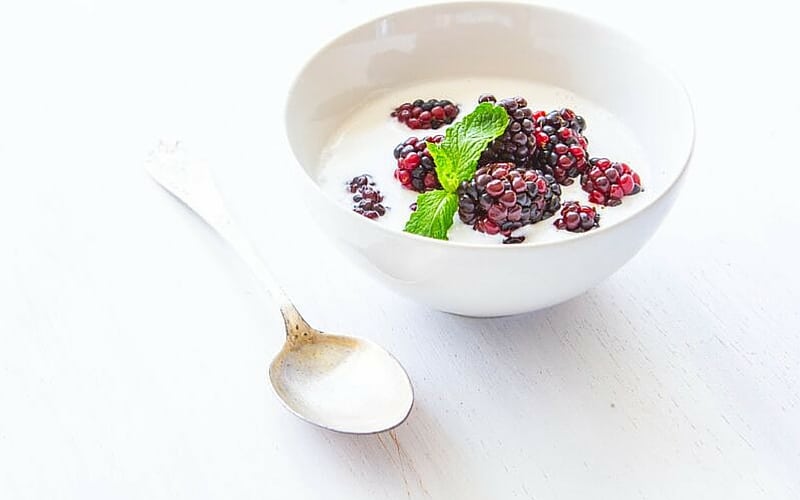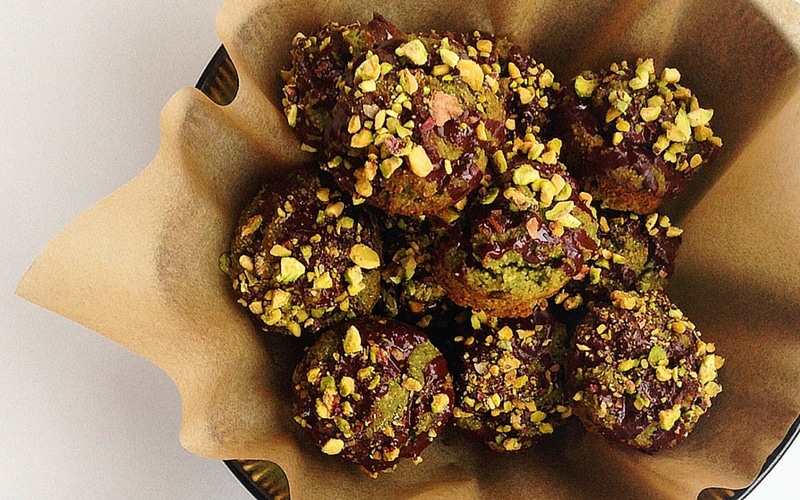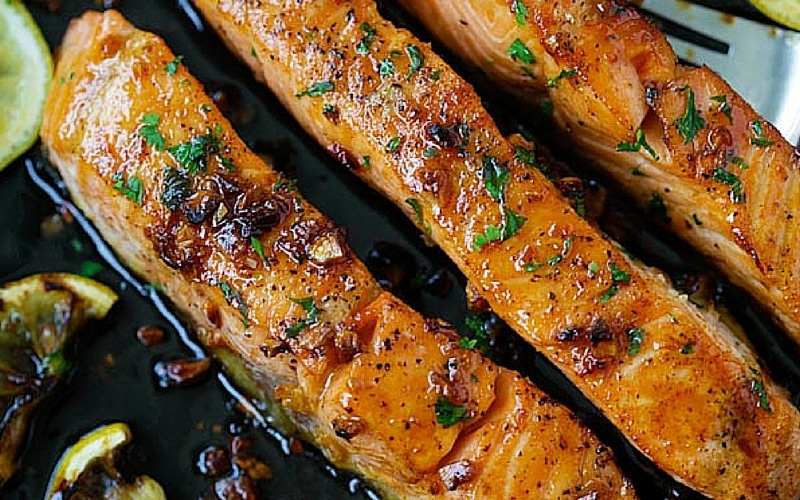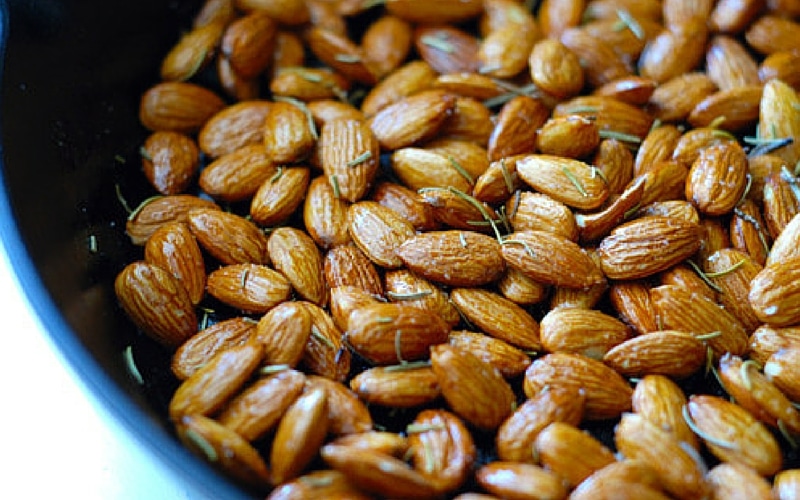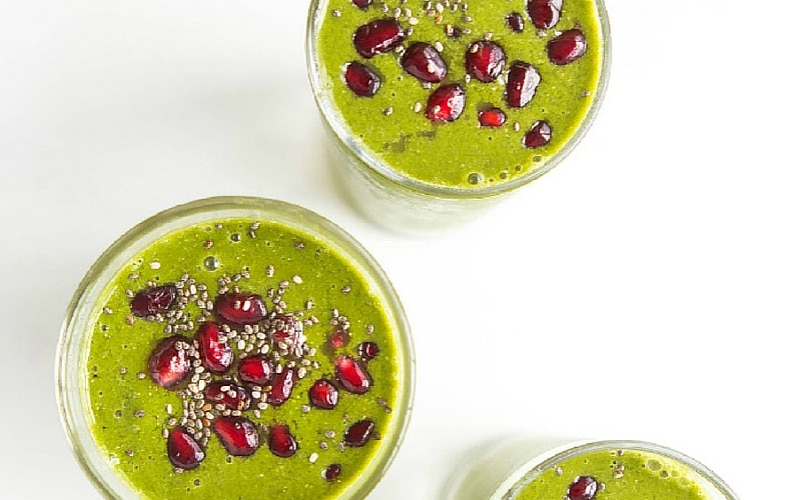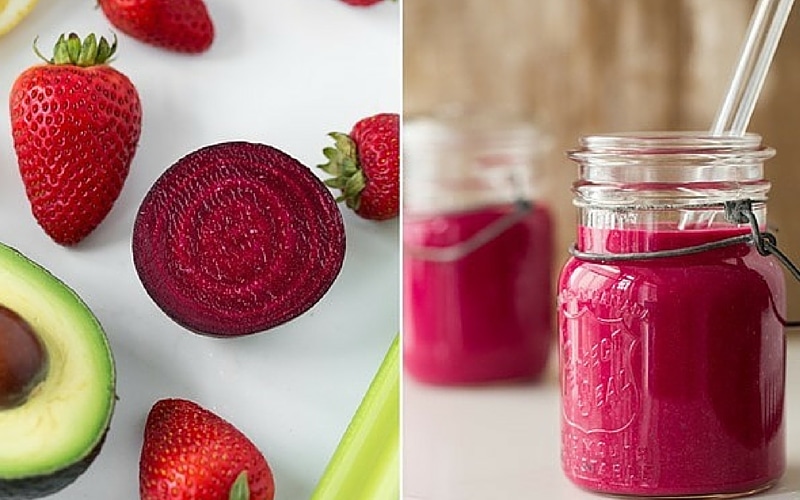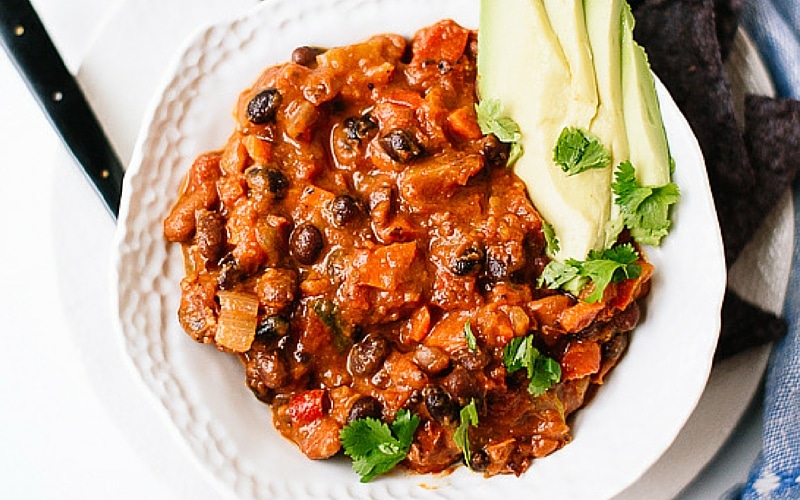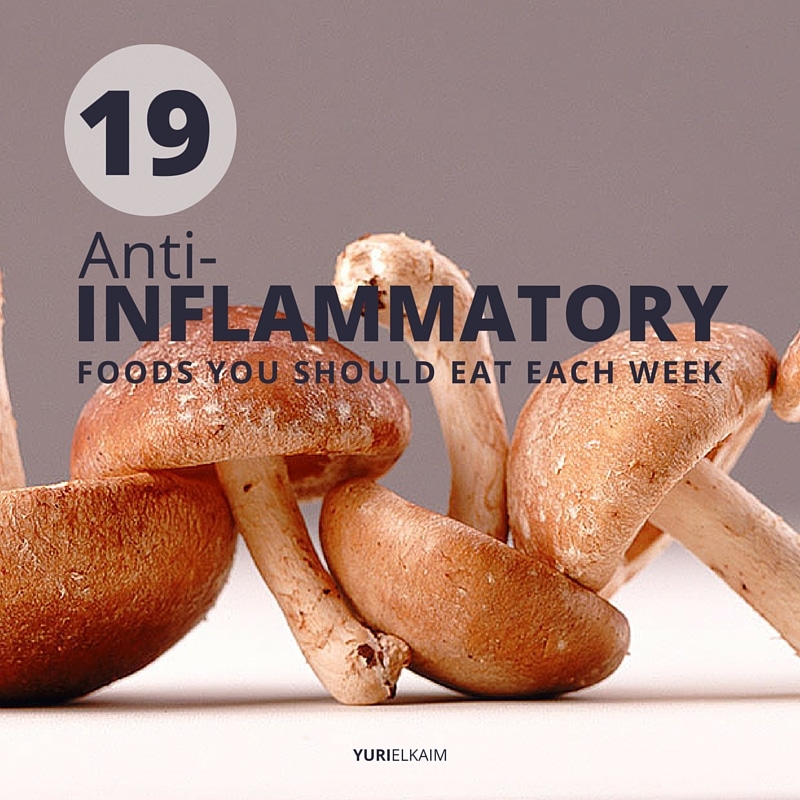
Your body is an incredibly complex, yet elegant machine. Unfortunately, it’s intricate functions can become compromised by illness and inflammation. To keep these invaders at bay, you should become familiar with this list of anti-inflammatory foods.
In this article
Too many of us survive on a diet of processed foods that really wears us down after some time. What you want to be eating is a wholesome, nutritious diet that cools the inflammation in your body.
Inflammation is a growing concern for a lot of people, and I’m glad there’s a new awareness building around how it.
To help you get started with this revolutionary, life-changing diet—which I touch on in my new book The All-Day Fat-Burning Diet, here’s my go-to list of anti-inflammatory foods.
List of 19 Anti-Inflammatory Foods You Should Eat Each Week
1. Turmeric
Let’s start with one of the absolute best anti-inflammatory foods there is. It’s also known as‘Indian saffron’, but you probably know it as turmeric.
Many studies have validated the claims of ancient medicines that use turmeric as an anti-inflammatory treatment, whether used internally or externally.
All these properties come from a biochemical compound called t. It exhibits potent anti-inflammatory action and is recommended for the treatment of arthritis, wounds, UTI, eye inflammation, skin problems, and liver disorders.
Anti-Aging Turmeric Elixir
2. Ginger
You’ll find this one near the top of any list of anti-inflammatory foods. Since ancient times, ginger has been prized for its medicinal qualities.
What’s also fantastic is that modern science validates this sterling reputation.
A 2013 study found that a daily intake of 3 grams or more of ginger reduced muscle soreness in female athletes.
Ginger Turmeric Spiced Spring Carrot Soup via Gourmande in the Kitchen
Another study demonstrated that ginger was as effective as NSAIDs (Ibuprofen and Mefenamic acid) in reducing PMS in women.
3. Garlic
Garlic belongs to the family of allium vegetables and is used as a spice as well as a herb.
It goes great in almost any cuisine, but more importantly, garlic is an anti-inflammatory. Studies have found it to be equal to the use NSAIDs in treating osteoarthritis.
In an in-vitro study, garlic killed round worms in the test tubes. Other studies have shown its ability to treat jock itch, ringworm, and athlete’s foot.
Garlic also improves heart and vascular health. As if that’s not powerful enough, several studies have found that eating raw or cooked garlic regularly reduces the risk of cancers by 35%.
The Garlic Soup for Colds (Slow Cooker Recipe)
4. Onion
This modest vegetable packs a punch in the fight against inflammation. It contains sulfur and polyphenols that have powerful antioxidant properties. Also, onion displays anti-allergic, anti-inflammatory, antihistaminic and anti-aging properties.
Quercetin, which is a polyphenol flavonoid, is a natural antihistamine found in onion. Animal studies have shown quercetin’s ability to fight off oxidative stress and inhibit antihistamines in the body.
3-Ingredient French Onion Slow Cooker Soup
5. Basil and Rosemary
They go great with all kinds of dishes, but herbs like basil and rosemary are also potent natural anti-inflammatory agents.
The rosmarinic acid and essential oils in rosemary have noted anti-inflammatory, antiseptic and antifungal properties.
Basil is known as the ‘king of herbs’, is packed with anti-inflammatory properties, and contains polyphenolic flavonoids (Vicenin & Orientin), essential oils (Eugenol, Linalool, terpineol, etc.), Vitamins (A&K), and minerals (Potassium, copper, magnesium and manganese).
No list of anti-inflammatory foods is complete without these two powerful herbs.
Roasted Vegetables via Jamie Oliver
6. Shiitake Mushrooms
Mushrooms are packed with immune-supportive compounds. They have powerful bacteria and yeast killing qualities.
Shiitake mushrooms, in particular, possess amazing anti-inflammatory quality. They contain ergothioneine, which is a naturally occurring amino acid, and it has displayed strong antioxidant and anti-inflammatory qualities in various studies.
A 2012 study has shown that ergothioneine supplementation over six weeks improved range of movement and reduced pain in chronic joint pain.
Asian-Style Shiitake Mushrooms and Baby Bok Choy via Tartine and Apron Strings
7. Cloves
A clove is an aromatic spice and is packed with bio-active compounds like eugenol, tannins, terpenoids, and acetyleugenol. These compounds carry potent antioxidant and anti-inflammatory character. They also have antiseptic, antimicrobial, stimulant and aphrodisiac qualities.
Chocolate Chip Coconut Flour Pumpkin Bars via ambitious Kitchen
8. Cinnamon
Cinnamon is a warming spice and is extracted from the inner barks of a cinnamon tree. It contains bio-active compounds like cinnamaldehyde, cinnamyl alcohol and cinnamyl acetate and these are responsible for the health benefits of cinnamon.
A 2011 study published in the Journal of Molecular Biology postulated that the cinnamaldehyde in the cinnamon acts as an anti-inflammatory and attacks the inflammatory pathways in the body.
By inhibiting these pathways, cinnamon has a potential role in inhibiting diseases like meningitis, multiple sclerosis, Parkinson’s, inflammation in the brain, and Alzheimer’s disease.
Cinnamon Bun Muffins via Comfy Belly
9. Olive Oil
Olive oil has been used for skin care since the time of the Pharaohs. It has been typically used as a cleanser, moisturizer and antibacterial agent since ages.
I bet you’re wondering what it’s doing on this list of anti-inflammatory foods.
Olive is rich in a compound called ‘oleocanthal’ which is similar to NSAIDs in its action. It blocks the mediators of inflammation and inhibits the inflammatory pathways.
It also acts as a COX inhibitor, which is a primary mediator of inflammation. By blocking the COX enzyme, olive oil relieves inflammation and pain in the body.
Seven Salad Dressing Recipes via Wellness Mama
10. Tomatoes
Tomatoes belong to the family of nightshade vegetables. They are abundant in phytonutrients like carotenoids, anthocyanin, and flavonoids. The carotenoids found in tomatoes are carotene and lycopene.
Lycopene is one of the most powerful naturally occurring antioxidants. It scavenges free radicals and eradicates oxidative stress. It also improves cellular integrity and delays aging.
Many studies have linked lycopene to reduced risk of cancers. One study found that consumption of more tomatoes reduced the risk of sunburn and made skin look more youthful.
[Related Article: How to Get Clear Skin: 1-Day Drink Menu for a Healthier Complexion]
The anthocyanins found in tomatoes are colourful pigments and belong to the flavonoids family of phytochemicals. They have excellent anti-inflammatory and antioxidant properties. They are heart healthy and also have an ability to combat cancers.
Homemade V8 Smoothie
11. Pineapple
Pineapple gets its medicinal properties from an enzyme ‘bromelain’ which is abundant in the fruit. Bromelain is currently under study for a myriad of medicinal properties.
What is known is that bromelain in pineapple is a known anti-inflammatory. Its action resembles NSAID acetaminophen and other drugs in combatting pain and inflammation in arthritis.
Almost ten studies, perused by the Arthritis Foundation in the UK, have confirmed the effects of bromelain in treating inflammation in arthritis.
Thai Pineapple Fried Rice via COOKIE + kate
12. Pomegranate
Pomegranate is an excellent source of dietary fiber, vitamin C, folate and vitamin K. A 100 gm serving of this fruit provides for 12 % of daily recommended value of vitamin.C and 16 % of vitamin K.
Pretty good, right?
This fruit is also abundant in essential oils (linoleic acid, palmitic acid, punicic acid, stearic acid and oleic acid) and polyphenols. The red colour of the fruit is imparted by ‘anthocyanin pigments’ that are anti-inflammatory and antioxidants. They protect the cells and tissues from oxidative stress and accord them with an ability to fight inflammation.
Asian Pear and Pomegranate Salad via ONE lovely LIFE
13. Berries
Berries like blueberries, tart cherries, raspberries, strawberries, and cherries are loaded with Vitamin C and antioxidants.
They are powerhouses and are brimmed up with phytonutrients like flavonoids, anthocyanins, and carotenoids.
The anthocyanins in the berries fights inflammation protect the heart and reduces the risk of cancers.
2-Minute Summer Dessert – Berries and Coconut Cream
14. Green Tea
Need a pick-me-up in the morning but coffee makes you too jittery? Reach for a pot of enlivening green tea.
Long used in Japan, green tea is known for its neuro-protective, cancer-protective and heart-protective qualities
Recent studies have shown it to have an amazing anti-inflammatory quality. Green tea contains a polyphenolic compound called ‘Epigallocatechin-3 galate’, which inhibits type-2 cartilage degradation and interleukin–induced proteoglycan in the joints and body.
These chemicals are inflammatory cytokines and are responsible for cartilage destruction in case of osteoarthritis and ROM restriction and pain.
In lab studies, it has also shown a potential to cripple transcription factor NF-kB which is responsible for cell survival, DNA transcription and cytokines release in situations of stress, inflammation and infection.
Please note: I’m no fan of caffeine, so I don’t drink coffee or green tea, and I would advise you not to either. That said, green tea does contain some wonderful health properties, so I present this information so you can make an empowered choice that works for you.
Paleo Mini Matcha Muffins via grok grub
15. Fatty Fish
You might not expect to find any form of meat on this list of anti-inflammatory foods, but fish is spectacularly good for you.
Salmon, mackerel, sardines tuna and other cold water fishes are loaded with essential Fatty Acid–Omega-3. As per the modern studies, omega-3 is one of the most effective naturally occurring anti-inflammatories. It has been used in the treatment of skeletal, muscular and disc diseases since the 18th century.
There are two active ingredients in fish oil, EPA – Eicosapentaenoic acid and DHA- docosahexaenoic acid and these two augment the conversion of COX enzyme to Prostaglandin E3, which is a natural anti-inflammatory.
Honey Garlic Salmon via Rasa Malaysia
16. Nuts
Nuts like almonds, walnuts and pine nuts are packed with healthy fats, fiber and protein. The mono-unsaturated fats in the nuts are antioxidants, heart healthy and provide the body with an ability to fight infection.
A 2011 study found that men and women who consumed more of these nuts had a 51% lower risk of contracting an inflammatory disease and dying.
Roasted Rosemary Almonds via Nom Nom Paleo
17. Greens
Green leafy vegetables are low in calories but packed with health benefits.
They are rich in vitamins and minerals, and a myriad of phytonutrients available in the greens provides tremendous disease fighting ability.
The high fiber content found in green leafy veggies keep the gut lubricated and the flora balanced. This reduces the risk of coming down with irritable bowel syndrome.
Leafy greens also augment our immune system by enhancing a gene called T-Bet, which is responsible for immune-related functions in the bowels. This gene initiates ILCs – innate lymphoid cells, which are immune cells responsible for:
• Producing a hormone, Interleukin -22, this protects the body from pathogenic infections.
• It also maintains a balance between cell immunity, inflammation, and tolerance to inflammatory substances.
• Prevents cancerous growth.
Easy Green Smoothie Recipes: 8 Three-Ingredient Combinations
18. Beet Root
Beetroot or red beet is a rich source of folate and manganese. It is packed with betaines—a bioactive compound, which is cardio-protective. It blocks a chemical ‘homocysteine’ in the blood, which is an analog of an amino acid cysteine.
It is hypothesized that homocysteine may contribute to cardiac diseases by harming the blood vessels. It is also demonstrated by studies that beetroot juice reduced blood pressure in humans.
Pink Power Detox Smoothie via Oh She Glows
19. Chili/ Peppers
If you enjoy Thai food, you’re probably familiar with chili.
Chili is a green/red fruit of a small shrub and is known for its heat and intensity. What you might not know is that it’s packed with a chemical named Capsaicin which is responsible for the pungency as well as the health benefits of chili.
Capsaicin inhibits inflammatory chemical NF-kB, thus producing an anti-inflammatory effect. It also causes regional anaesthesia by degenerating nociceptor nerve endings.
Finally, capsaicin is a major ingredient of many topical skin preparations like oils, ointments and creams. These preparations are used to relieve pain and inflammation in conditions like arthritis, sore muscles, neuropathic pain in those struggling with herpes infection or diabetes, as well as post-operative pains and headaches.
Homemade Vegetarian Chili via COOKIE + kate
I hope this list of anti-inflammatory foods sends you running to the supermarket to stock up on all of this good stuff. If you put a little time and effort into it, you can truly heal yourself from your kitchen.
Enjoy This Article?
Did you enjoy this List of Anti-Inflammatory Foods? You might also like my 1-Day Detox Plan. It’s designed to detoxify your body in 24 hours using mouthwatering “cleansing” meals. Click the banner below to get it for FREE.


